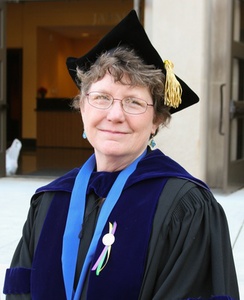
Dr. Lissa Power-deFur, professor of communication sciences and disorders, has published a new textbook that analyzes Common Core standards and provides interventions to meet student needs.
Most states in the United States have adopted Common Core standards, so it has become increasingly important for speech-language pathologists and other educators to adopt strategies to reach students most effectively. The book, titled Common Core State Standards and the Speech-Language Pathologist: Standards-Based Interventions for Special Populations, offers practical advice and approaches to create a template for dealing with special needs children.
While the book covers strategies for all students, it focuses specifically on children with communication disorders, hearing loss, vision loss, deaf-blindness, specific learning disabilities, autism and multiple disabilities, as well as English language learners. Longwood professor Dr. Peggy Agee, who also teaches in the communication sciences and disorders department, contributed the chapter on working with children with autism.
Power-deFur has taught at Longwood since 2004 and before that worked in special education for the Virginia Department of Education for 18 years. She has published numerous books and academic articles.
Excerpt from Common Core State Standards and the Speech-Language Pathologist:
Children with speech sound disorders generally lag their age peers in producing words with the appropriate phonemes. They may demonstrate substitution, deletion, distortion, or addition of phonemes, either due to difficulties in placement of the articulators or due to difficulty with the phonological rules associated with producing phonemes and words. Differences in production of speech sounds (phonemes) that are attributable to dialect or non-English language influences are not considered speech sound disorders. The development of an accurate speech sound system relies on motor control for articulatory performance, knowledge of the phonology of language, and the ability to perceive phonemes in running speech. Approximately 8%–9% of children have a speech sound disorder. This falls to 5% for first graders, which is likely a combination of the child’s maturation and intervention received from SLPs. There is a higher prevalence for boys than girls and a low positive correlation with socioeconomic status. These figures include children with one or two phoneme errors (commonly [s] and [r], articulation disorders) or multiple error patterns. Children with multiple error patterns generally have errors on phonological rule systems. Other children with multiple error patterns may exhibit childhood apraxia of speech due to a neurological deficit in which the child is unable to exhibit voluntary control over the articulators for speech production in the absence of neuromuscular deficits. In either situation, the presence of multiple error patterns drastically impacts the child’s intelligibility and can make it difficult to identify if there is a concomitant language production issue.
As many as 50%–70% of children with speech sound disorders experience general academic difficulty through their high school years. An initial impact is the reduced clarity of the students’ speech. Many students with speech sound disorders avoid speaking in class, not wanting to draw attention to their speech. This behavior may result in social isolation, limiting the students’ ability to learn from peers. The presence of speech sound disorders is associated with lower performance on phonological awareness tasks. Children with phonological disorders are more likely to have difficulty with phonological awareness and literacy than children with articulation disorders. Children’s performances on phonological awareness tasks are consistently associated with reading ability, so it is not surprising that children with severe speech sound disorders tend to have poorer reading skills, especially if the errors persist after the age of 6 years, 9 months. Further, the presence of reduced speech intelligibility adversely affects teachers’ perceptions of students, as they frequently perceive such students as having less academic potential.

